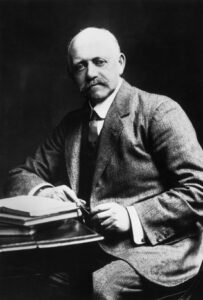Okay, first of all, my brother’s post last week was an April Fool’s Day joke. You cannot get rid of us that easily! But a surprising number of people didn’t even read through the first paragraph to learn he was fooling us. I just want to say that these people might want to start reading the fine print, lest they be taken advantage of by people more nefarious than my brother! Anyway, we’re here again on a Monday morning with a perspective on some history that was new to me, and perhaps will be to you as well. As a life-long student of WWII history I’ve read hundreds of books about the war and the people who fought it. But last week I came across an article that was a surprise and once again illustrated why the British were known as masters of spy craft.
When the first British airmen were captured by the Germans in 1940, the British intelligence services established a new section, MI9, specifically to help captured Allied prisoners of war escape. Intelligence officer Clayton Hutton was put in charge of masterminding a plan that would be both effective and foolproof. He came up with a plan to devise some “toys” that could be introduced into the POW camps in an innocuous – and continuous – manner. Hutton seized upon the fact that the Germans liked to see games in the prisoner’s care packages, as they thought that prisoners concentrating playing games wouldn’t be concentrating on plotting an escape. The prisoners, for their part, liked playing familiar, ordinary games as a welcome pastime to help them forget the realities of war, if even for a short time. So, Hutton conspired with the U.K. Monopoly manufacturer, Waddington’s, to produce special Monopoly boards that could be distributed as part of larger aid packages. In addition to the standard thimble and dog game pieces, each board contained metal “playing pieces” that were actually escape tools, such as a file and magnetic compass. He also invented a sort of Swiss Army Knife piece, but with wire cutters and lock breakers along with the traditional screwdrivers and bottle openers.
 The games were always sent via private, often fictitious, organizations, like the Licensed Victuallers Prisoner Relief Fund. No escape aids were enclosed in the Red Cross parcels so that the Germans would have no justification for stopping these much-needed parcels from reaching the prisoners. Unique clues, known only to the British, were included in the return addresses and on the game board itself. Each version also contained silk maps packed into the game’s hotels which could be unfolded discreetly without drawing attention, as silk made no noise as it was being pulled from the game piece or a pocket. The silk escape maps were probably the most important part of the secret version of Monopoly, as they provided logistics for European countries such as Norway, Sweden, Germany, France, and Italy. These “special editions” of the game also hid German, Italian, and French currency under the fake Monopoly money for use in bribing guards.
The games were always sent via private, often fictitious, organizations, like the Licensed Victuallers Prisoner Relief Fund. No escape aids were enclosed in the Red Cross parcels so that the Germans would have no justification for stopping these much-needed parcels from reaching the prisoners. Unique clues, known only to the British, were included in the return addresses and on the game board itself. Each version also contained silk maps packed into the game’s hotels which could be unfolded discreetly without drawing attention, as silk made no noise as it was being pulled from the game piece or a pocket. The silk escape maps were probably the most important part of the secret version of Monopoly, as they provided logistics for European countries such as Norway, Sweden, Germany, France, and Italy. These “special editions” of the game also hid German, Italian, and French currency under the fake Monopoly money for use in bribing guards.
Once the games were being sent on a steady basis, soldiers were told that, should they be captured, they should be on the lookout for the special Monopoly sets. Reportedly, 35,000 prisoners of war managed to escape prison camps in Nazi-occupied Europe, and it is believed that nearly 20,000 of them had a silk map, compasses, and other supplies that had been hidden inside the Monopoly boxes. The success of the Monopoly ruse eventually led British intelligence to conceal maps inside chess sets and packs of cards.









































